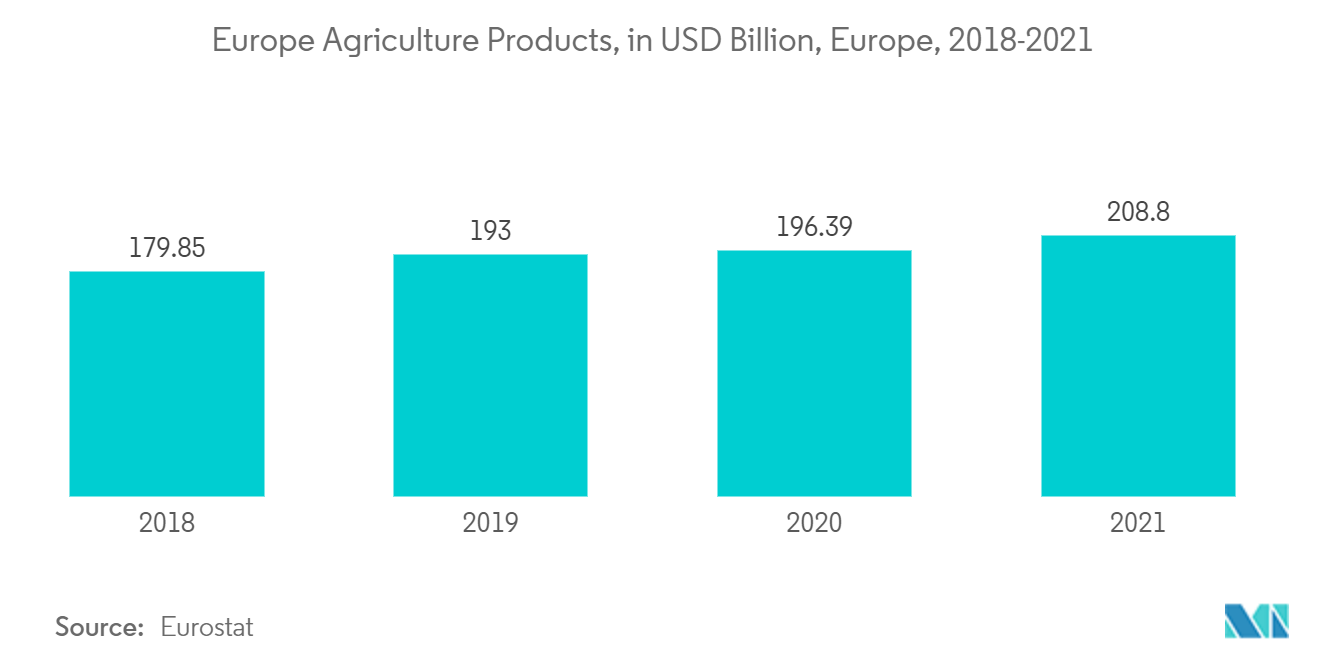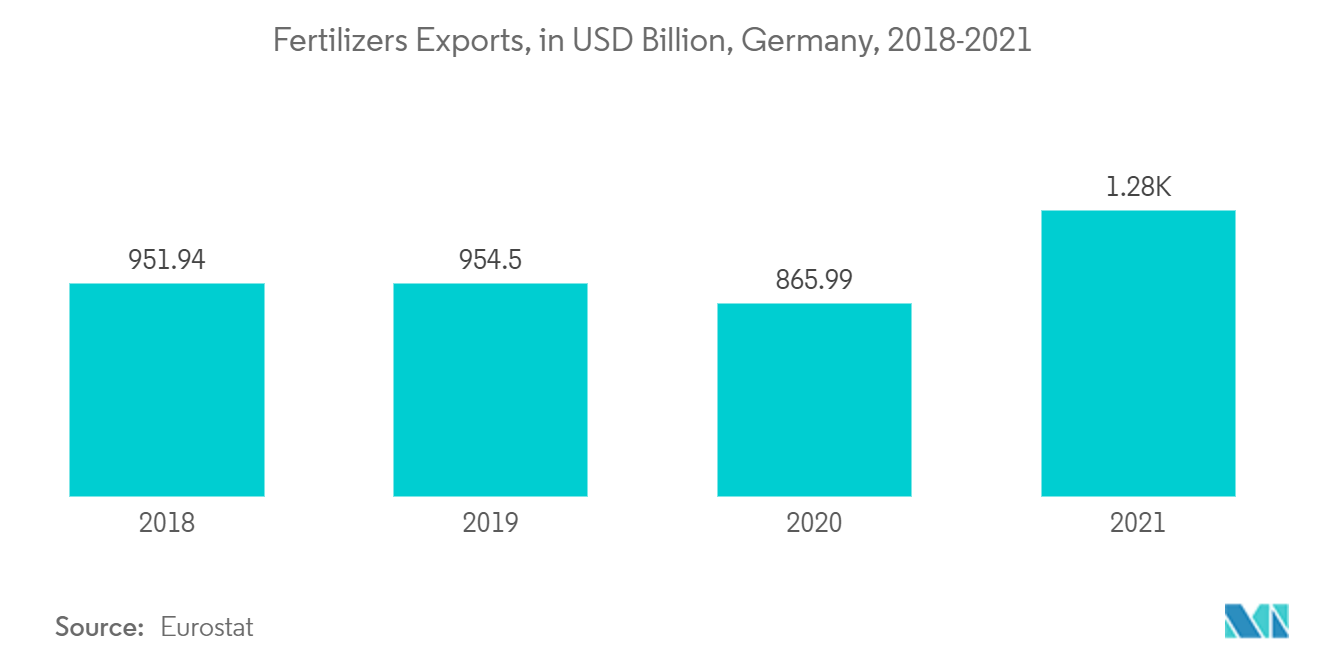Market Trends of Europe Syngas Industry
Ammonia Segment to Dominate the Market
- Syngas is a byproduct of the industrial synthesis of ammonia and fertilizer. Throughout this process, methane (from natural gas) reacts with water to produce carbon monoxide and hydrogen (from natural gas) reacts with water to produce carbon monoxide and hydrogen. The gasification process is used to transform any carbon-containing substance into longer hydrocarbon chains.
- Through the Haber-Bosch process, syngas can be turned into ammonia, which is a common part of fertilizers. During this process, nitrogen from the air is mixed with hydrogen from the syngas to make ammonia, which can then be used to make different kinds of fertilizers.
- Using syngas as a source of raw materials to make fertilizer has a number of advantages. For example, syngas can be made from a number of different materials, which gives companies more options and makes them less reliant on a single raw material. Also, making syngas from biomass by gasifying it can help cut down on greenhouse gas emissions compared to making fertilizer from fossil fuels.
- Ammonia is an important fertilizer in Europe, used to provide essential nitrogen to crops. Europe is one of the world's top agricultural exporters. According to Eurostat, Europe exported USD 208.8 billion in agricultural products in 2021, a 6.3% rise over the previous year. In 2021, the United Kingdom was both Europe's largest export destination for agricultural products and the second largest origin of Europe's imports, just behind Brazil.
- In 2021, the value of fruits and vegetables produced in the EU was over USD 65 billion, accounting for over 14% of the total value of agricultural goods and services produced in the EU. Switzerland was the largest export destination for the EU's fruit and vegetables.
- All the factors listed above are expected to drive the ammonia segment, enhancing the demand for syngas in Europe during the forecast period.

Germany to Dominate the Market
- Germany has minimal domestic oil production, equivalent to around 2% of oil consumption. However, the refining operations in the country are some of the largest in the world.
- Increasing investments in refineries is another factor that is estimated to further boost the consumption of syngas in the country.
- Additionally, Ineos announced plans to invest in two petrochemical plants, with Germany being one of the locations. However, the location is not yet finalized. This, in turn, is expected to boost the demand for syngas in the country.
- The chemical industry in Europe is constantly engaged in developing new chemicals. Geographical location and advanced infrastructure are some of the key reasons why many players choose Germany as their base.
- Germany is a major producer and exporter of fertilizers, particularly ammonia-based fertilizers. The country is home to several significant chemical businesses that specialize in fertilizer manufacture, and its ammonia-based fertilizers are in high demand both domestically and internationally. According to Eurostat, fertilizer exports from Germany in 2021 were valued at USD 1,280.35 million, a 38.4% increase over the previous year.
- In the chemical industry, syngas is used to make chemicals and fuels. To make syngas, coal, petroleum coke, and biomass are turned into gas. In the chemical business, syngas is used to make methanol, ammonia, and hydrogen. Through the "gas-to-liquids" (GTL) process, carbon monoxide and hydrogen react to turn syngas into methanol. Methanol can be used to make formaldehyde, acetic acid, and other things.
- Syngas is both a fuel and a raw material. It can be used to heat boilers and heat exchangers in chemical plants and for other high-temperature industrial uses. Germany is the biggest exporter of chemicals in Europe. According to Eurostat, Germany sent 129.19 billion dollars worth of chemicals out of the country in 2021.
- Increasing power generation in the country is boosting the demand for syngas. The power generation from natural gas, petroleum gas, hard coal, and lignite accounts for a major share of almost 46% of the total power generation in Germany.
- All the above mentioned factors are expected to augment the demand for syngas in the region over the coming years.


